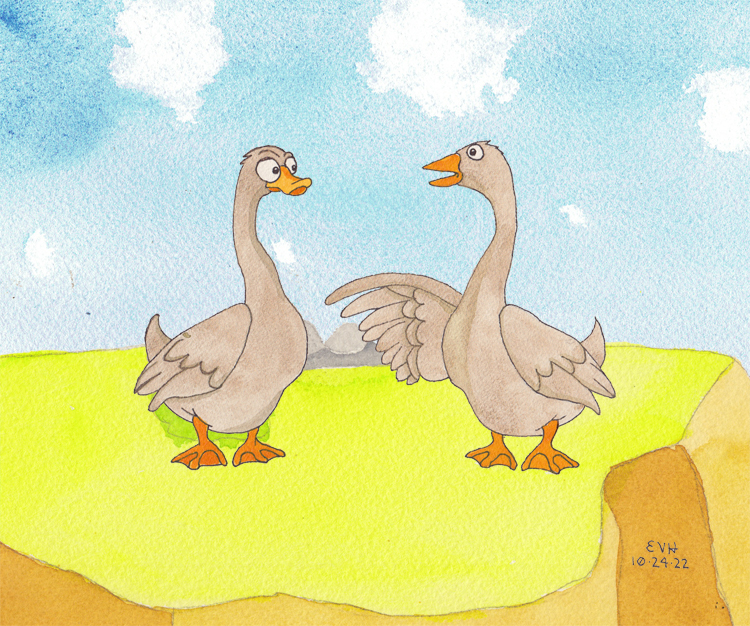
Jataka 379
Neru Jātaka
Mount Neru
as told by Eric Van Horn
originally translated by H.T. Francis and R.A. Neil, Cambridge University
originally edited by Professor Edward Byles Cowell, Cambridge University
It may take some discernment to puzzle out this tale, but fundamentally what it describes is the mountain “Neru.” Mount Neru turns all birds and animals who live there to the color of gold. OK, this may sound really cool, but the simile is that the mountain does not use wisdom and good judgment to turn only the wise creatures into gold. It does so indiscriminately. The Buddha often taught that we must use good judgment in deciding with whom to surround ourselves. There are those who are wise, and those who are foolish, and we must learn how to determine who all of those are.
It is always a nice story when one of the characters is Ānanda. He is probably the most endearing person from the Buddha’s time.
“Ravens and crows.” The Master told this story while he was at Jetavana. It is about a certain monk. The story is that he got the instructions for meditation from the Master, and then he went to a frontier village. There the people, pleased with his conduct, fed him, built a hut for him in the woods, and exacted a promise from him to live there. They gave him great honor. But they subsequently abandoned him for those who teach permanence, for teachers who deny the truth of rebirth, and those who are naked ascetics, for teachers of all these sects came among them in turn. So he was unhappy among people who did not know the difference between good and evil.
After the rains retreat and the pavāraṇa (the Buddhist festival at the end of the rains retreat), he went back to the Master. He told the Master where he had stayed during the rains retreat. He also said that he had been unhappy among people who did not know the difference between good and evil. The Master said, “Sages of old, even when they were born as animals, did not stay even one day among those who did not know the difference between good and evil, so why did you?” And at his request, he told them this story from the past.
Once upon a time when Brahmadatta was King in Benares, the Bodhisatta was born as a golden goose. Along with his younger brother, he lived on the hill Cittakūṭa and ate at a wild rice paddy in the Himālaya Mountains. One day on their flight back to Cittakūṭa, they saw the golden mountain Neru. They settled on its summit. Around the mountain there were birds and beasts of many kinds who used this as a feeding ground. From the moment that they arrived at the mountain, they became the color of gold from its luster. The Bodhisatta’s brother saw this, but he did not understand the cause for this. He said, “What makes this happen?” And he spoke to his brother these two stanzas:
Ravens and crows, and we the best of birds,
When on this mountain, all appear the same.
Mean jackals, rival tigers, and their lords,
The lions; what can be the mountain’s name?
The Bodhisatta hearing this spoke the third stanza:
Noblest of mountains, Neru is it height,
All animals are here made fair to sight.

Figure: “All animals are here made fair to sight.”
The younger one hearing this spoke the remaining three stanzas:
Where’er the good find honor small or none,
Or less than others, live not, but begone.
Dull and clever, brave and coward, all are honored equally.
Undiscriminating mountain, good men will not stay on thee!
Best, indifferent and meanest Neru does not separate,
Undiscriminating Neru, we alas! must leave you straight.
With this they both flew up and went to Cittakūṭa.
After the lesson, the Master taught the Four Noble Truths. At the conclusion of his teaching, that monk attained stream-entry. Then the Master identified the birth: “At that time the younger goose was Ānanda, and I was the elder.”
